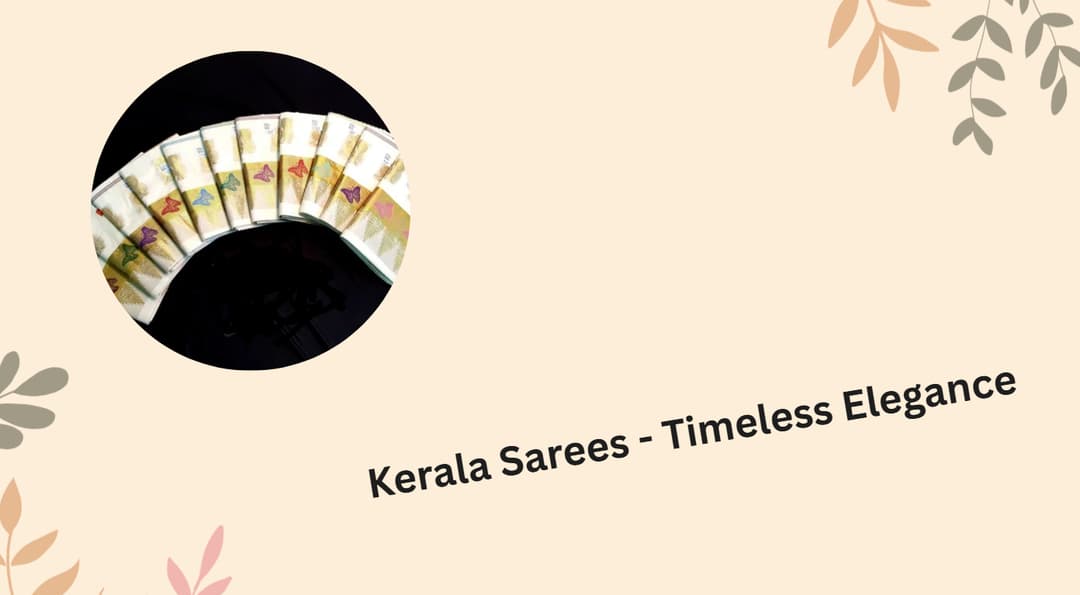Kerala Sarees - Timeless Elegance

When it comes to ethnic wear that embodies grace, simplicity, and cultural richness, Kerala sarees stand in a league of their own. Often referred to as Kasavu sarees, these elegant drapes are not just garments but a representation of Kerala’s rich cultural tapestry, cherished across generations and worn with pride during festivals, weddings, and traditional ceremonies.
What is a Kerala Saree?
A Kerala saree, traditionally known as the Set Saree or Kasavu Saree, is a handwoven cotton saree distinguished by its off-white or cream base with golden borders. The word Kasavu refers to the gold zari used in the borders and sometimes in the pallu (the loose end of the saree). This saree is a symbol of purity and elegance and has long been associated with Kerala’s cultural and religious festivals, especially Onam and Vishu.
A Glimpse into History
The origins of the Kerala saree are deeply rooted in the state's cultural history. In earlier times, women wore a two-piece garment known as the Mundu and Neriyathu—a style that still survives today in some parts. Over time, this evolved into the modern Kerala saree while retaining its iconic features: the pristine body and golden border.
The gold in the border once indicated status and prosperity, often made with real gold threads. Today, while modern variants use artificial zari, the elegance and charm remain intact.
Cultural Significance
Kerala sarees are an essential part of traditional celebrations. During Onam, women across the state and beyond wear these sarees to participate in Pookalam (floral decoration), Thiruvathira (a classical dance), and Sadya (a traditional feast). Brides also favor Kasavu sarees, often with heavier golden embroidery and matching gold jewelry, for their wedding ceremonies.
Variants and Modern Touches
While the classic Kerala saree remains timeless, contemporary designers have introduced creative variations:
- Colored borders: Instead of the traditional gold, some sarees now feature red, green, or silver borders.
- Printed designs: Modern motifs and temple prints are being used to appeal to younger generations.
- Silk Kasavu sarees: For special occasions, silk versions of the Kasavu saree offer a grander look.
- Embroidered sarees: Subtle embroidery work on the pallu or borders blends tradition with modern aesthetics.
Styling the Kerala Saree
Wearing a Kerala saree is all about grace and minimalism. Here are some styling tips:
- Pair with a gold blouse or a contrasting color like maroon, green, or red.
- Accessorize with temple jewelry—jhumkas, bangles, and a traditional necklace like Mulla Mottu Mala.
- A gajra (flower garland) in the hair and subtle makeup complete the traditional look.
Why Kerala Sarees Matter Today
In a world of fast fashion, the Kerala saree stands as a symbol of sustainability, cultural pride, and handwoven artistry. It’s a tribute to the weavers who keep the tradition alive, and to the women who wear it with pride and poise.
Whether you're a native of Kerala or someone who appreciates Indian handloom, owning a Kerala saree is like owning a piece of timeless heritage.
Tags
- kerala sarees
- ethnic wear